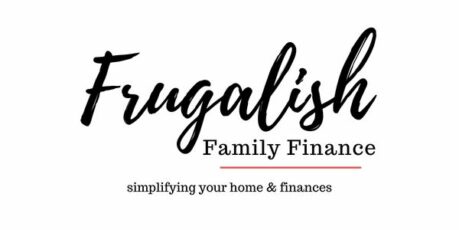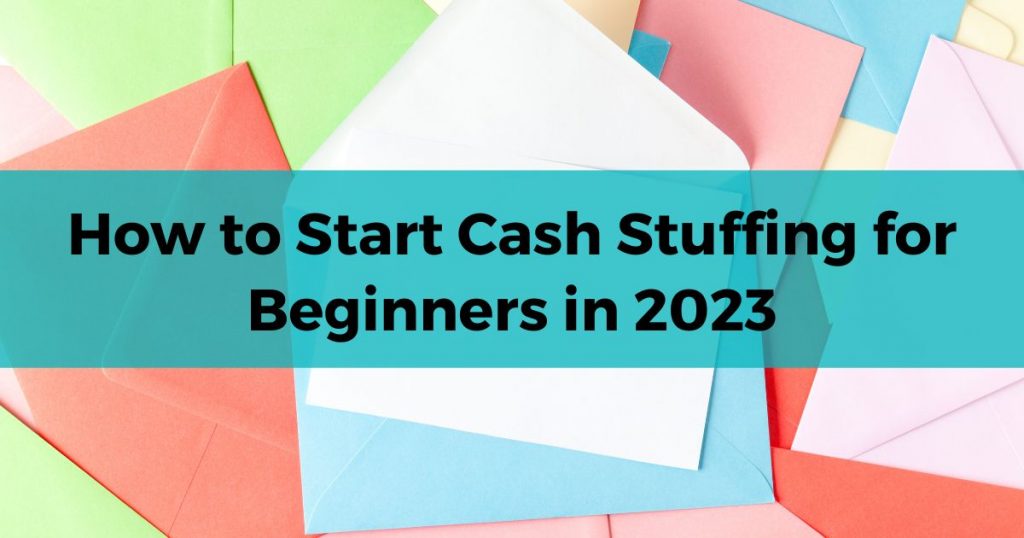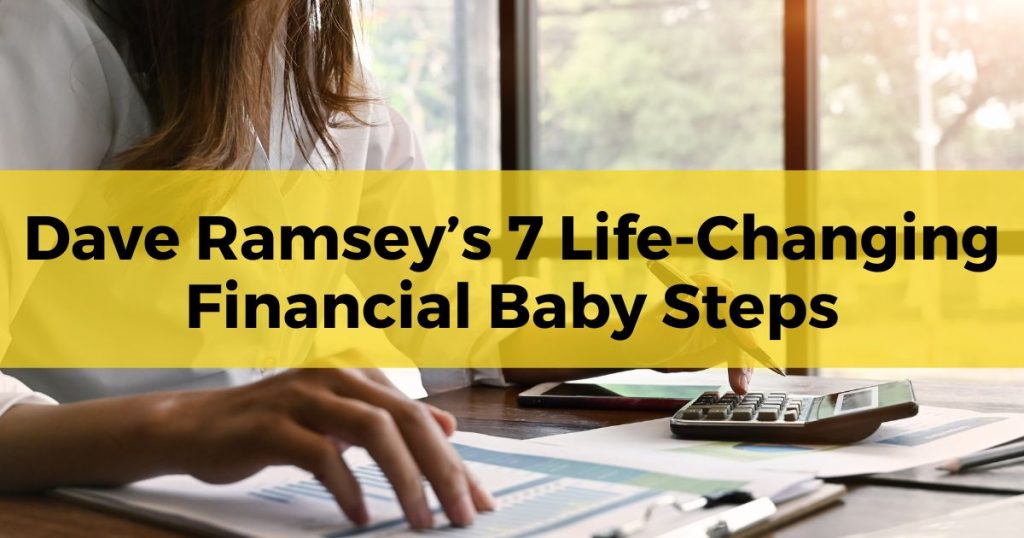You may have seen the new tik tok trend of cash-stuffing and been left wondering, does it really work?
The short answer…yes! It really does work.
Although, cash stuffing is not a new thing. In fact, it’s been around forever. How do you think people paid for stuff before the creation of credit cards? Cash stuffing is basically an old-school cash envelope system with a cool new name.
It’s a great way to help you stay on budget, save money, and change your spending habits. It’s a simple way to make a huge impact on your finances. But you have to know how to do it the right way.
My husband and I were absolutely clueless about money management for a long time. When we finally learned how to budget, we used cash envelopes. Using them made our budget tangible. When you have your whole grocery budget in your wallet, it makes you way more intentional with your spending! Therefore, cash stuffing helped us watch our spending and stay on budget.
And even though we don’t use them 100% of the time now, we’ll go back to using them when we find ourselves overspending in a specific category.
So, if you’re new to cash envelope budgeting or struggling to stay on budget, here is everything you need to know about cash stuffing for beginners!
Disclaimer: This post may contain affiliate links. This means I receive a small commission, at no extra cost, if you purchase using the links below. Please see my earnings disclaimer for more details.
Table of Contents
What is cash stuffing?
Cash stuffing is a budgeting method using envelopes to create specific categories in your budget to pay cash for.
Most people only use cash envelopes for the discretionary part of their budget, such as groceries, gas, and personal care. Fixed expenses like your mortgage, insurance, and car payment are most likely paid online or through your bank account.
Basically, you pull out money each paycheck and deposit it into your envelopes to spend on the budgeting categories you choose.
Why do cash envelopes work?
Paying with cash helps you to develop an emotional connection to your money, which makes you more intentional with your spending.
According to The Decision Lab, the cashless effect makes you more likely to spend when no physical money is involved. This can lead to overspending and possible debt.
When using cash envelopes, your budget becomes tangible, making it less likely to go over budget.

How to start cash stuffing for beginners
You may be curious about the logistics of the cash envelope method. Here is a breakdown of how to use cash envelopes to manage your money.
Create your budget
Grab a piece of paper, a pencil, and a huge eraser, and create your monthly budget before the start of the month.
Choose your budget categories
Next, choose the cash envelope categories you want to have. Typically, these different categories will be anything not paid directly from your bank account or the categories you tend to go over budget.
Stuff your envelopes
Next, it’s time for cash-stuffing your envelopes!
To do this, you need to decide how often you want to stuff your envelopes.
We decided to divide the budgeted categories by payday. Therefore, we added money to our envelopes every payday.
For example, we get paid twice a month. I budget $300 for gas. I would put $150 into the envelope on the first payday and the other $150 the next payday to equal the $300 I budgeted.
Track your spending
Tracking your spending is as important as creating a budget.
Tracking your spending on the back of your envelopes or a budget card will help you to know exactly how much is left to spend and keep you within budget.
But make sure to track your spending as soon as you spend it!
Who should use cash envelopes?
Everybody! But, seriously, cash stuffing can be extremely beneficial if you need help to stay on budget with specific categories or you’re just starting out budgeting.
Benefits of using cash envelopes
Cash envelopes force you to stay on budget because you have a hard limit on the amount you can spend each month.
This has two benefits:
You stop overspending
You can’t overspend because you only have a certain amount in your envelopes, and the money needs to last until the next paycheck.
When the money runs out, it’s gone. Therefore, you start to plan your spending more carefully and question the necessity of your purchases more often.
Related: 4 Painful Consequences of Overspending and How to Stop
You save money
When you’re able to stay on budget, you can save more money because you’re not overspending.
Saving money motivates you to become more intentional with your purchases, saving you even more money and reaching your financial and savings goals.
How many cash envelopes should I have?
Too many cash envelopes make it difficult to keep organized and hard to carry when shopping.
Not enough cash envelopes may mean you may be overlooking some areas of spending.
I recommend carrying between 5-7 cash envelopes for your discretionary spending.
Recommended cash envelopes you should have
You can use cash envelopes for all the variable expenses you don’t pay online. Or you can use the budgeting envelopes for the areas in your budget where you have problems with overspending.
Some specific budget categories to use cash envelopes are:
- Groceries
- Eating out/Restaurants
- Gas
- Miscellaneous spending
- Hair/Beauty
- Fun
- Car maintenance
- Birthdays
- Pets
- Personal care
Related:
How To Save Money On Groceries Without Using Coupons
46 Super Frugal Meals That Won’t Break The Bank
40 Damn Delicious Freezer Meals to Save Time and Money
The Art of Meal Planning for Busy Moms (And Dads)
What should not be included in a cash budget?
Expenses that come directly from your bank account should not be included in a cash budget.
Expenses including…
- Mortgage/Rent payments
- Gas/Electric
- Cable/Internet
- Phone
- Streaming services
- gym membership
- Insurance
Making cash envelopes work with a spouse
To make any budget work, you and your spouse must be on the same page about your finances.
Decide who will be the primary spender for each cash envelope. Only take what envelopes you need when going out, and leave the rest at home in a safe place.
Make sure to track your spending on the back of the envelope. This way, you both know how much has been spent, so you can stay on budget.
Beginner tips for cash stuffing
Here are the biggest tips to help start cash envelope budgeting.
Paper budget first
Write out a budget on paper before your month begins. This way, you know how much you need to withdraw and what denominations of cash you want.
You don’t want all $100 bills. Figure out the exact bills you need to put into each envelope you will use.
It’s easiest to stick to the lower bills, such as $1, $5, $10, and $20.
Ease your way in
It’s best to pick 1 or 2 problem areas of your budget to use cash envelopes. Starting with too many envelopes can become overwhelming and make it less likely for you to stick to using them.
Reassess your budget monthly
Make sure to revisit your budget each month to reassess your spending. Since inflation has become so bad, I’ve had to take a closer look at my grocery budget and increase the budgeted amount to compensate for it.
If you’re going over budget, figure out if you need to cut your spending or increase your budget.
Stay organized
Find a way to keep your envelopes organized. Whether you want to use an accordion file or a cash envelope wallet, find an organizational system that works for you.
Related: 14 Best Cash Envelope Wallets For Your Money In 2023
Frequently asked questions about cash envelope budgeting
Here are the most commonly asked questions about cash envelope systems to help you use your cash envelopes.
Does envelope budgeting work?
Yes! Using cash envelopes forces you to stay on budget because you pay cash for everything.
It makes you more aware of how you’re spending your money and how much you’re spending because when you run out of money, it’s gone until the next payday.
How much should I put in a cash envelope?
The amount you put in each envelope depends on what you budget.
For example, if you budgeted $500 for groceries, you would put either $500 in your envelope at the beginning of the month or divide the amount by the number of paydays you’ll have.
Therefore, if you get paid twice, you would put $250 in your envelope each time you get paid that month.
What do you do with the leftover money in your cash envelopes?
If you have money left in your envelopes at the end of the month, you can do one of the following:
- You can roll the money over to the next month. This works well if you are trying to stock up on grocery items.
- You can pay down debt by putting the extra money toward your credit card debt payoff.
- You can use the extra cash to put toward your emergency fund or sinking funds you’re saving for.
- You could splurge and buy something for yourself or your family.
- You can pay extra towards your mortgage payments.
What is one potential downside of using a cash envelope budget?
Some people think using cash envelopes may be inconvenient or that it’s unsafe to carry around that much money.
Honestly though…
- It’s really not all that much more effort paying in cash.
- You should only carry the cash envelope you intend to shop with, not all your money envelopes.
Can you use an envelope system without cash?
Yes! If you want to avoid carrying cash, there are several ways to use the cash envelope system without the money.
- Track your spending as you would with cash envelopes; just use your debit card instead of cash.
- Use a digital cash envelopes app to track your debit card spending. Some apps that I like are Mvelopes and Goodbudget.
A word of caution, it’s easier to overspend when you’re not paying with physical money. So be mindful.
What do I do if I run out of money?
The whole point of cash envelopes is to control your spending. You may be tempted to pull money from your other envelopes if you’re running low, but resist that urge!
When the money is gone, it’s gone! This will teach you to be more intentional with your spending next time. But, if you find you’re consistently running out of money, it may be time to reassess your budget.
What do I do if I have an emergency?
An emergency fund is so important!
You have to have a separate savings account for emergencies. An emergency fund keeps you out of debt and prepares you for the unexpected.
Check out my 30-day emergency fund challenge to help you save a starter $1000 emergency fund.
What do you do with your coins?
Many people wonder what you should do with the change you get back from your spending. Here are a couple ways to handle the coins.
Spend your change
Keep the change in your envelope to spend. Though you may find your envelope filling up with change if you don’t use it.
Save your change
Which leads me to the next option. Save your coins to put towards an emergency fund, a sinking fund, or a family fun adventure!
I love this digital coin-counting money jar to save your change. You just drop the coins in the jar, and when it’s full, or you have the amount you want, you can take it to the bank or Coinstar to exchange for dollar bills.
What To Do When You Buy Something Online
There will be times when you shop online and don’t use the cash in your envelope. You will need to take the amount spent on your card and deposit it back into your bank account.
If you know you’ll be shopping online in advance, don’t withdraw the amount you plan to spend. That way, you don’t have to worry about running to the bank to redeposit the cash.
But make sure to account for that spending on your envelopes because it’s still part of that category.
Conclusion
A cash envelope budget is a great way to take control of your money. It gives you that emotional connection to your money that you need to help you become more intentional with spending.
It helped my family learn how to budget, pay off debt, and save money. I hope you’ll try it if you’re struggling with budgeting or overspending because it will transform your finances and help you reach your financial goals!
Do you use cash envelopes? Leave a comment below and let me know how you like them!






Great post! We don’t do physical cash envelopes (cash is becoming less common in New Zealand, and there are fewer and fewer atms and banks actually open now).
But we use this principle with our monthly budget, to help us keep our spending in check.
Pippa
That’s interesting. I expect at some point it will be like that everywhere. It takes a bit more discipline to make it work digitally, but it definitely helps to keep spending under control.
Oh I love this! I’ve never thought about using this method!
It really is a great way to help get spending under control. Thanks for reading!
As a single guy living alone, this is a great eye opener. I have this huge problem of overspending, poor money management and generally lack of a budget. I will surely try cash stuffing for the next two months and see how it turns out!
It’s so helpful if you struggle with overspending. We really sucked at budgeting, and then we started using the cash envelopes in addition to our budget…it was life-changing! Good luck!
I love this system and you provided tips I haven’t ever heard of! Excited to try them out
I’m so glad!
Cash stuffing is a new and an interesting idea to me. I will definitely try it out or recommend it to friends. Thanks for sharing.
It’s definitely a great way to stay on budget! Thanks for reading.
I’ve seen this trend on tiktok but have been unable to try it out because technology’s made me so lazy to go to the bank and withdraw cash! Definitely a great idea to try out though.
It’s definitely a pain going to the bank at first. But, it becomes a habit. And it’s so worth it!
Cash envelopes is an amazing way to keep your budget in check. Great post!
Thank you! It really a great system!
Hi we are starting with budgeting and have managed to change my job and I’m also going for a second job to.and my husband has got a job but he’s also going to get himself a second job to.to start paying off debts.and on our days off we are going to find each other some side hustles. To bring in the extra money and cash that we’re both going to need as we both need to get on the same page. And we would really like some hints and tips on budgeting and cash stuffing.and see what you do and see what you think of it and how it’s working for you. And give us a bit of more information about it as I’m really interested and really want to start doing this for our selves.and see how well it works for us.
Hi Diane! Thanks for stopping by. Budgeting can seem really intimidating at first, but if you stick with it gets so much easier. The most important thing is to start budgeting. Write down your total monthly income and your total monthly expenses. If you have money left over put it towards debt. If you don’t have enough, start cutting out the non-essential things to free up money in your budget. I have a post about the budgeting method I use called zero-based budgeting. It’s the simplest budgeting method I have used, and really easy to understand. It’s also really important to track your spending so you know you are staying on budget. I hope that helped a bit, but feel to send me an email through my contact page and I can answer more of your questions.